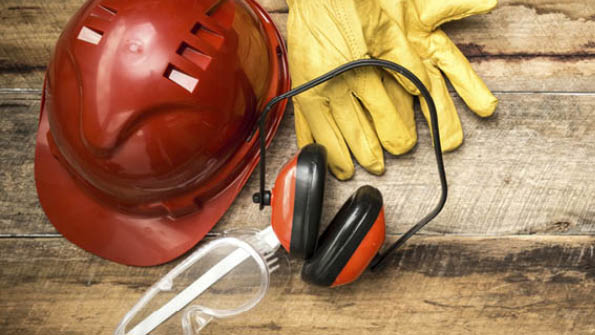
Very serious injuries and toxic exposures at landfills are not common, but the industry remains vigilant, especially with the occurrence of tragedies like last year’s fatality at a Clearfield County, Penn., site where a cell collapsed. It was one of eight landfill fatalities in North America in 2017, seven of which were in the U.S., according to David Biderman, executive director and CEO of the Solid Waste Association of North America (SWANA). In 2016, the National Waste & Recycling Association (NWRA) reported 920 job-related cases among U.S. landfill workers involving days off work.
Injury prevention is largely about changing behaviors. No scavenging policies, wearing protective gear and specific guidelines around parking and operating trucks all have a significant impact.
Federal regulations effectively address chemical and biological exposure risk, but since landfills receive many waste types, there are always unknowns, so operators take precautions, especially around leachate management and gas collection.
On injury prevention, specifically with regard to rummaging through trash, Biderman says, “Workers may scavenge through trash and, in that 10 seconds, may lose track of a truck or bulldozer’s location. This equipment is often in motion and sometimes going backwards.”
Still, most truck accidents happen on the road, as landfills are more controlled spaces, says Anne Germain, vice president of technical and regulatory affairs for NWRA.
But, she cautions, “Because most operators keep the working face as small as possible, trucks are placed relatively close together, so there needs to be awareness. You may have spotters directing traffic to keep things moving in a controlled way.”
Drivers should park vehicles at least 15 feet apart, for two reasons, says Biderman. “When you swing open a transfer trailer door before tipping a load, that door could hit someone walking between trucks if there is insufficient space. Further, because landfills are not paved, and because ground gets softer after it rains, weighted trucks may tip.”
SWANA has developed a tip sheet for landfill safety, addressing truck and equipment safety as well as the use of protective gear.
There are potential exposure risks, especially when old waste is exposed and for sites that take in hazardous wastes.
“Hazardous wastes, even a small volume, when combined with various waste types, can form complex chemical combinations, and we don’t have the ability to analyze every complex chemical or necessarily know the health risks. So, it’s important to always be aware of exposures to landfill employees and subcontractors,” says Milind Khire, a professor in civil and environmental engineering at the University of North Carolina, Charlotte.
To assess for chemical exposure, air sampling companies are sufficient. However, if a landfill receives biological waste, they have to get on board with a commercial biological lab to culture micro-organisms, says Khire.
Biological waste is usually wet sludge, so micro-organisms would rarely be airborne. Still, he suggests landfill owners do airborne cultures if they receive medical waste, animal waste or material from pharmaceutical manufacturers or labs that test vaccines.
Gas monitoring is a big piece of the safety puzzle, which is why sampling ports in gas collection systems must be continually monitored. If the concentration is outside the acceptable range, operators need to talk to a site engineer because there are many possibilities to explore.
If, for example, methane readings are low but carbon monoxide or hydrogen sulfide are high, the site may be undergoing potentially dangerous changing decompositions or chemical reactions.
Rumpke Waste & Recycling, the Colerain Township, Ohio-based waste disposal company, will infrequently encounter a situation where an employee must enter an area of compacted trash or an especially confined space. In this scenario, the company leverages precautions like using 4-gas meters to ensure the space is safe. These meters most commonly monitor concentrations of oxygen, carbon monoxide, hydrogen sulfide and combustibles.
In certain situations, for example when dealing with industrial wastes like friable asbestos, Rumpke employees are required to wear respiratory protection.
“Prevention is first, but if worker exposure occurs, we establish an incident command and move through the corresponding response plan. Following an instance, a thorough investigation is conducted, and methods to prevent reoccurrence are instituted,” says Jerry Peters, Occupational Safety and Health Administration (OSHA) compliance manager at Rumpke.
Meanwhile, while landfills typically have good safety practices to mitigate and respond to exposure and other injury types, there are no national standards. That’s why NWRA assembled a working group of industry stakeholders to establish guidelines to get everyone on the same page.
“The standards will provide requirements and guidelines where there are points of confusion,” says Bret Biggers, director of statistics and standards at NWRA. “They will give practicality to OSHA regulations and add clarification to unique issues at landfills.”
About the Author(s)
You May Also Like




